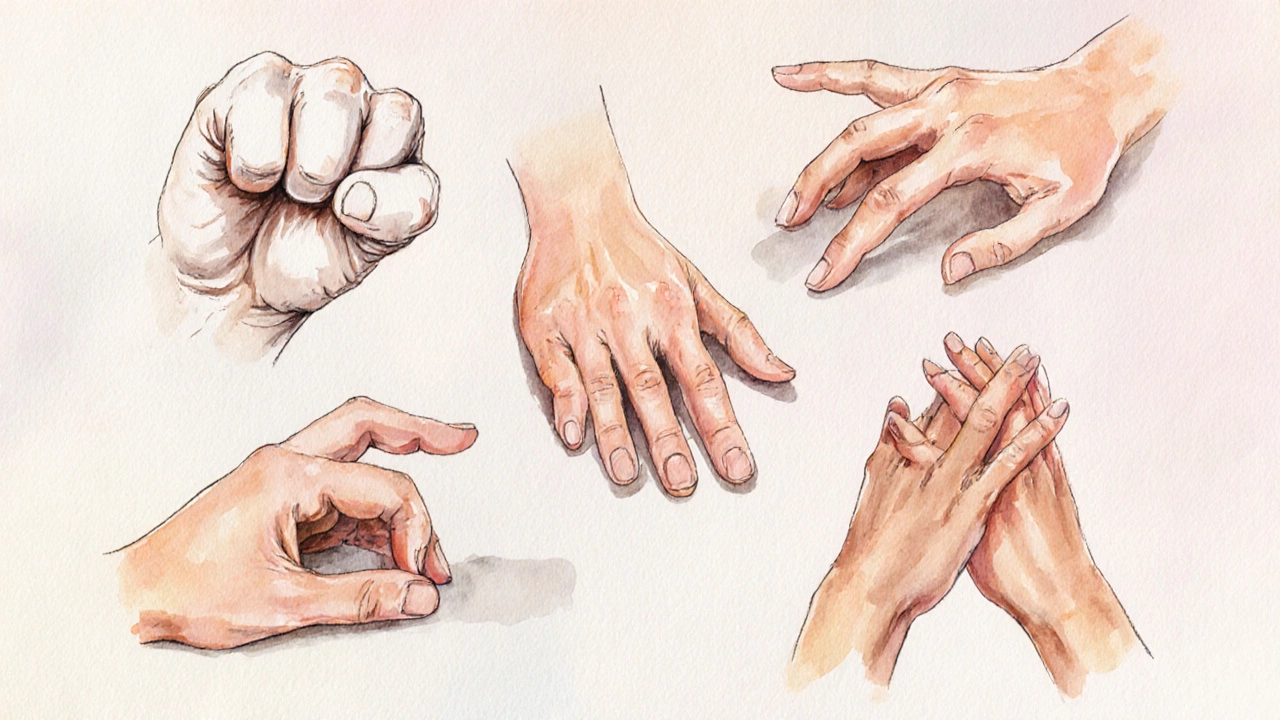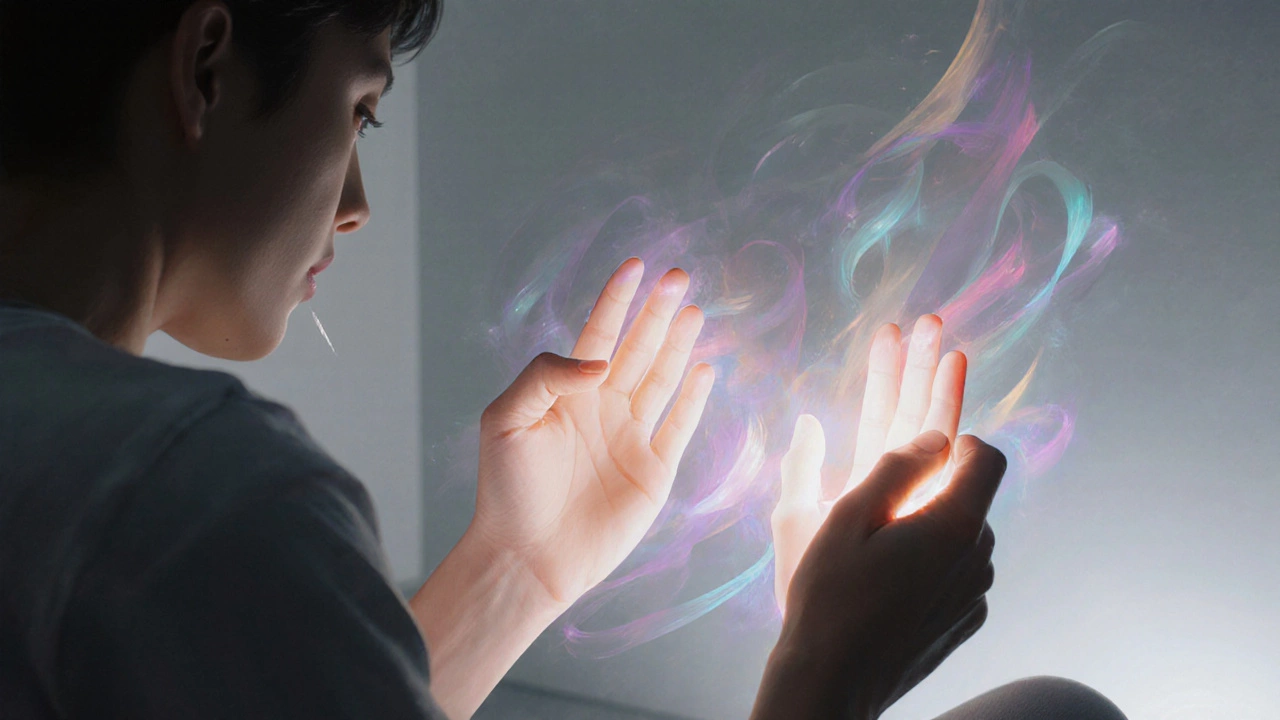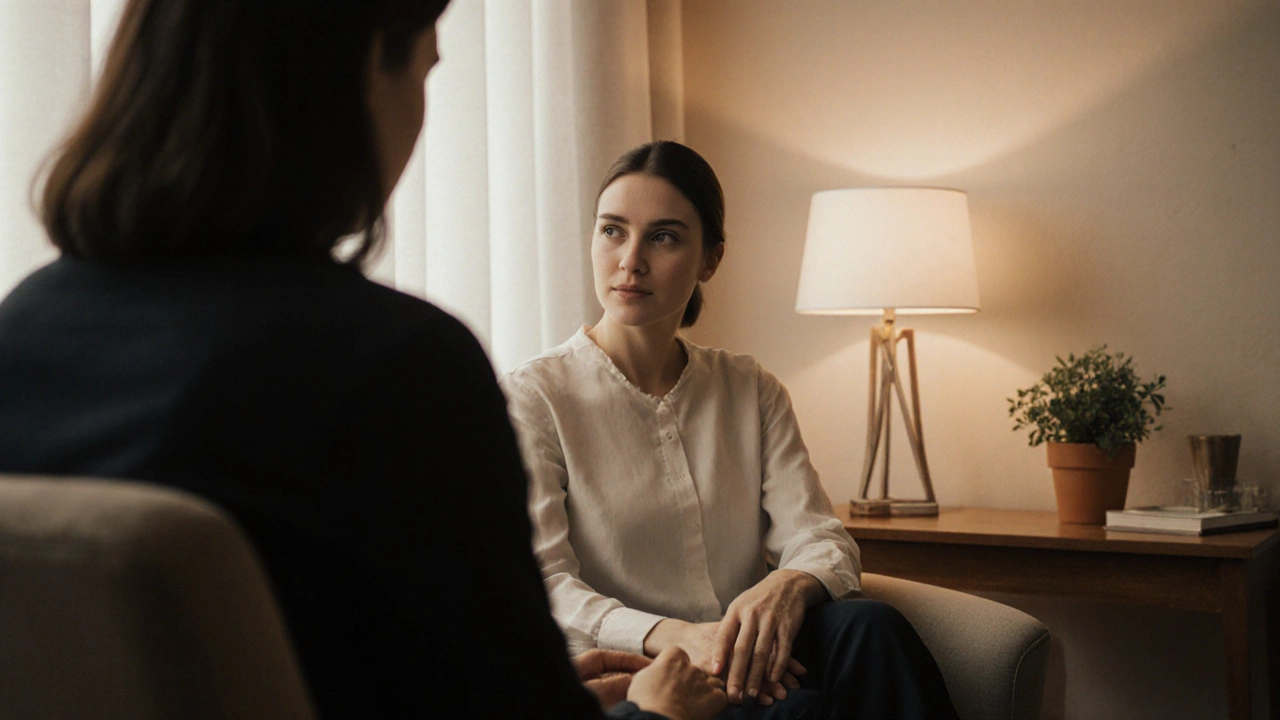Therapist Hand Observation Tool
Select a Hand Gesture
Your Hand Gesture
Click "Analyze My Hand Signal" to see interpretation
Interpretation
Select a gesture and click analyze to see what therapists might observe
Ever noticed your therapist’s eyes flicking to your hands while you’re talking? You’re not dreaming. Most clinicians use hand observation as a silent shortcut to understand what’s bubbling beneath the surface. In this article we’ll unpack why they do it, what they’re actually looking for, and how you can use that knowledge to get more out of your sessions.
Key Takeaways
- Therapists watch hands to read nonverbal cues that reveal emotions, stress levels, and hidden thoughts.
- Common hand signals include clenched fists (anxiety), open palms (openness), and fidgeting (restlessness).
- Understanding the purpose behind hand observation helps you feel less judged and more collaborative.
- You can actively share or relax your hand language to improve therapeutic rapport.
- Ask your therapist directly if you’re curious - open dialogue strengthens the therapeutic alliance.
What is Hand Observation in Therapy?
Therapist is a trained mental‑health professional who guides clients through emotional, cognitive, or behavioral challenges. One of the subtle tools in their toolbox is watching the client’s hand gestures movements of the hands and fingers that may convey feelings without words. This practice sits under the broader umbrella of body language the collection of nonverbal signals - posture, facial expression, eye contact, and hand movement - that supplement spoken language.
When a therapist subtly tracks those gestures, they’re tapping into non‑verbal cues bits of information that can reveal emotions, stress, or resistance that words mask. Think of it as a silent conversation happening alongside your words.
How Do Therapists Read Hand Movements?
Therapists have been trained - often through years of psychotherapy the systematic treatment of mental‑health disorders through talk‑based methods coursework - to link specific hand patterns with internal states. Here are three common lenses they use:
- Emotional intensity: Tight fists, knuckles white, or clenched fingers usually signal heightened anxiety or anger.
- Openness vs. defensiveness: Open palms, relaxed fingers, or the act of placing hands on the table often suggest willingness to share, while crossed arms or hidden hands can hint at withdrawal.
- Grounding & mindfulness: Some therapists ask clients to place both hands on their thighs or a cushion as an anchoring technique. The degree of relaxation observed tells the therapist if the client is present or lost in thought.
These observations are never used in isolation; they’re combined with tone, facial expression, and the content of speech to form a holistic picture.

Typical Reasons a Therapist Focuses on Your Hands
| Hand Signal | Likely Interpretation | Therapeutic Use |
|---|---|---|
| Clenched fist | High stress or anger | Explore triggers, teach relaxation |
| Fidgeting (picking, tapping) | Restlessness, nervous energy | Introduce grounding exercises |
| Open palms on lap | Openness, safety | Deepen disclosure, affirm progress |
| Hands covering face | Shame or avoidance | Address underlying self‑criticism |
| Slow, deliberate gestures | Calm confidence | Reinforce coping strategies |
Below are five of the most frequent motives behind a therapist’s hand‑watching habit:
- Assessing anxiety levels: Rapid, tight finger movements often betray nervousness even when the client claims calm.
- Detecting trauma responses: A slight flinch when the hand brushes a surface can indicate a stored physical memory.
- Checking grounding: Therapists may ask you to rest your hands on a solid object; the ease of that action shows how present you feel.
- Measuring engagement: When you actively use your hands to illustrate thoughts, it signals mental activity and involvement.
- Building the therapeutic alliance: Mirroring your hand posture subtly can create rapport; observing yours helps them decide when to mirror.
What It Means for You
Seeing a therapist stare at your hands isn’t a judgmental stare; it’s a data‑gathering moment. If you notice they’re paying extra attention, you can use it as a cue to explore hidden feelings. For example, if you catch yourself gripping the armrest, you might ask, “I’m noticing I’m holding on tight - does that mean I’m scared of what we’re discussing?” This turns a silent cue into a conversation starter.
On the flip side, if you feel self‑conscious about your hand movements, remember that most clinicians are trained to stay non‑intrusive. Their focus on your hands is meant to protect you from oversharing or to catch subtle signs before they become bigger issues.
How to Respond Effectively
Here are three practical tips you can try in the next session:
- Become a gentle observer: Notice where your hands are without trying to control them. This awareness itself can calm nervous energy.
- Use intentional gestures: If you want to signal openness, place your palms gently on the table. Therapists often read that as a sign you’re ready to explore.
- Ask for feedback: “I saw you looking at my hands earlier; what did you notice?” gives you the information you need and strengthens trust.

When to Ask Questions About Hand Observation
Curiosity is a sign of a healthy therapeutic relationship. If you ever feel uneasy about the attention on your hands-perhaps you’re worried you’re being judged-bring it up. A good therapist will explain the rationale, such as, “I’m watching your hand movements to see if we’re hitting a stress point.” If they can’t give a clear answer, it might be a signal to evaluate whether the therapeutic style fits you.
Wrap‑Up: Turning Hand Watching Into a Tool for Growth
Therapists watch your hands because those small movements often betray bigger emotional currents. By understanding the why, you can turn a seemingly passive observation into an active part of your healing journey. Next time you feel that gaze, try a quick check‑in with yourself: what is my hand telling me? Use that insight, ask questions, and watch how your sessions become richer.
Frequently Asked Questions
Why do therapists focus on my hands more than my feet?
Hands are close to the face and often move with speech, giving therapists real‑time data about emotion and stress. Feet are less expressive and harder to observe without breaking the therapeutic flow.
Is it okay to keep my hands hidden during a session?
You can choose where to place your hands, but hiding them may remove a useful feedback channel. If a certain posture feels uncomfortable, discuss it with your therapist.
Can hand observation replace verbal communication?
No. Hand cues complement, not replace, spoken words. Therapists use both to build a fuller picture.
What if I’m neurodivergent and my hand movements are involuntary?
Tell your therapist about it. They can adjust their focus and learn which movements are habitual versus meaningful.
Do all therapy approaches use hand observation?
Most talk‑based therapies (CBT, psychodynamic, EFT) incorporate body language. Some methods, like purely cognitive coaching, might rely less on it.
